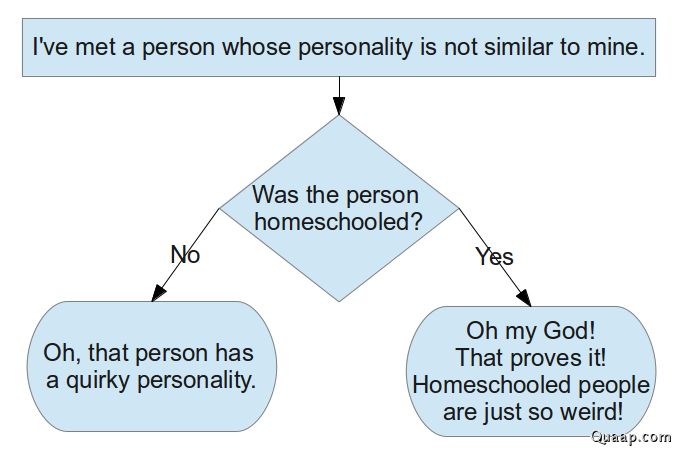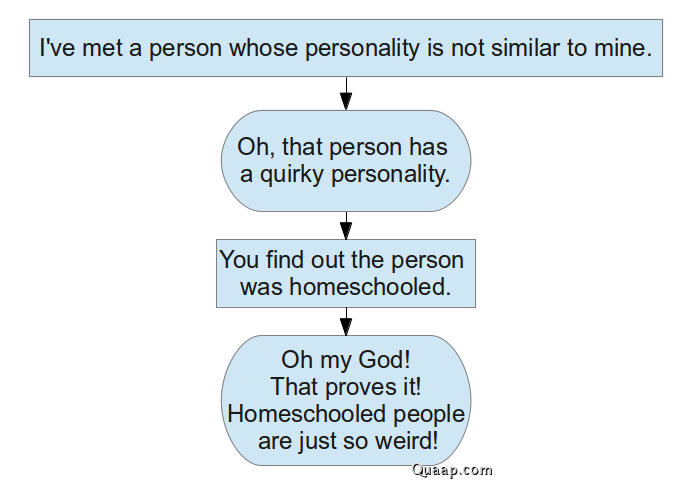Homeschooling stereotypes flowchart: 3 attempts
Lately I made the mistake of commenting on a few negative articles about homeschooling. It's always a mistake. I'm not going to change anyone's mind; I'm just going to raise my blood pressure after beating my head against the same tired and refuted arguments. The commenters asserting negative ideas about homeschooling are not interested in counter opinions from people who actually know more than one homeschooling family. They have an anecdote about "this one kid in college" who blah blah blah.
After making one or two attempts at being reasonable, I'll give up and turn into Sarcastic Man. After this last time, I began to write a long piece about homeschooling stereotypes and why they don't match up to our reality. But really, it's not worth it. The internet is full of refutations of objections to homeschooling. So instead, I decided to revisit something I've touched on before a few times. Namely, once a person believes a stereotype, they will view nearly anything as a confirmation.
Here, I'll quote myself:
Kids are kids, and vary greatly. For every "bad homeschool story" you have heard, I'm sure there are thousands of "bad public or private school stories". There are 300 million people in the United States, most of whom went through public school, so all those terrible people you heard about on the news or know personally are most likely public schooled. That annoying child in your neighborhood? Public schooled. That pregnant teenager? Public schooled. That kid who's way too shy, aggressive, stinky, uncivilized, etc? Public schooled.
I am not saying the public school caused those problems. I am saying that if you don't assume public school "caused" those problems, please grant at least the same leeway to the homeschooled kid.
This time I thought I'd take a different tack: a flow chart. My first attempt got me this:

That's good, but that's not quite right. It seems like it doesn't capture the instant categorization that people do when a stereotype is triggered. It also doesn't quite capture the blasé manner of acceptance when a stereotype is not matched. So let's try something more linear:

This is good too, but I fear it suffers the same issues. For the third attempt, it's back to the first format, but a few changes…

Yup. We'll stick with that for a bit.

Comments
_ Add comment